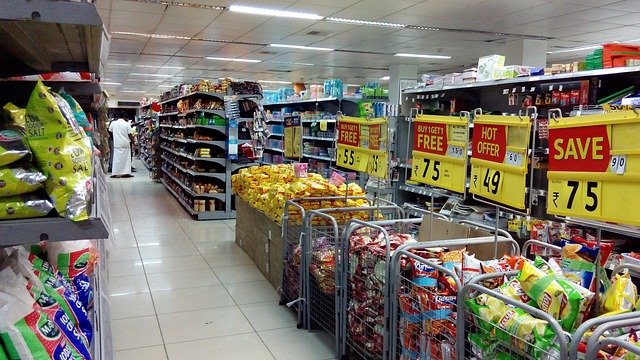Understanding Warehouse Inventory Sales and How to Score Great Prices
Warehouse inventory sales offer savvy shoppers a golden opportunity to snag incredible deals on a wide range of products. These events, often held by retailers and manufacturers, provide a unique chance to purchase goods at significantly reduced prices. Understanding the ins and outs of warehouse sales can help you make the most of these shopping experiences and potentially save on your purchases.

Why Companies Hold Warehouse Inventory Sales
Companies organize warehouse sales for several strategic reasons that benefit their bottom line and operational efficiency. Most commonly, businesses need to clear out excess inventory that hasn’t sold through traditional retail channels. This might include overstocked items, seasonal merchandise that didn’t sell during its primary selling window, or products with packaging changes. Manufacturers and distributors also use warehouse sales to make room for new inventory, especially when new product lines or models are being introduced.
Additionally, warehouse sales provide a revenue recovery mechanism for returned items, slightly damaged goods, or floor models that can’t be sold at full retail price. For companies facing financial challenges or restructuring, these sales generate quick cash flow while reducing storage costs. Some businesses even use warehouse sales as a marketing strategy to introduce new customers to their brand while building goodwill within the community.
The Benefits of Shopping at Warehouse Sales
Shopping at warehouse sales offers multiple advantages beyond the obvious price reductions. The most compelling benefit is the significant savings, with discounts typically ranging from 40% to 80% off retail prices. These steep markdowns make previously unaffordable items accessible to budget-conscious consumers. Warehouse sales often feature unique or discontinued items that are no longer available through regular retail channels, giving shoppers access to exclusive merchandise.
The direct-from-manufacturer or distributor model eliminates retail markups, allowing for better pricing than even traditional sales events. Many warehouse sales include a diverse product range, enabling shoppers to find everything from clothing and furniture to electronics and kitchenware in one location. For environmentally conscious consumers, purchasing through warehouse sales represents a sustainable shopping option by giving products a second chance before potentially ending up in landfills.
Tips for Finding Local Warehouse Sales
Discovering warehouse sales requires some research and persistence, as these events aren’t always widely advertised through mainstream channels. Start by signing up for email newsletters from your favorite brands and retailers, as they often notify subscribers about upcoming warehouse events. Following companies on social media platforms can also provide early notifications about sales.
Local newspapers and community bulletin boards still serve as valuable resources for finding warehouse sale announcements. Many communities have dedicated Facebook groups or online forums where members share information about upcoming sales events. For regular warehouse sale shoppers, developing relationships with sales staff at previous events can lead to insider information about future sales.
Specialized websites and apps like Eventbrite or local deal sites sometimes list warehouse sales in your area. Don’t overlook manufacturer outlets or discount stores that may have information about brand-specific warehouse events. During certain seasons, particularly before major holidays or at the end of retail seasons (January/February and July/August), warehouse sales become more common as companies clear inventory.
Strategies for Scoring the Best Deals
Success at warehouse sales requires preparation and strategic shopping approaches. Research products, regular retail prices, and features before attending to recognize genuine bargains and make informed decisions quickly. Arriving early is crucial, as the best items are often claimed within the first hours of a sale. However, attending near closing time or on the final day can yield additional discounts as sellers try to minimize leftover inventory.
Creating a priority list helps focus your shopping efforts on essential items rather than impulse purchases. When examining merchandise, thoroughly inspect for damage or defects, as many warehouse sale items are sold as-is with limited or no return policies. Don’t hesitate to negotiate, especially when purchasing multiple items or when items have noticeable imperfections.
Dressing comfortably and bringing essential supplies like water, snacks, measuring tape, and reusable shopping bags ensures you’re prepared for extended shopping. Many warehouse sales restrict access to fitting rooms or have limited trials for electronics, so knowing your sizes and specific requirements in advance is helpful. Setting a firm budget before entering prevents overspending on unnecessary items, regardless of how attractive the discounts may seem.
Navigating the Warehouse Sale Experience
The warehouse sale environment differs significantly from traditional retail shopping. These events typically feature minimal staffing, industrial settings without fancy displays, and merchandise organized by category rather than curated shopping experiences. Shoppers should expect a treasure-hunt atmosphere where patience and thorough browsing are rewarded.
Understanding common warehouse sale policies helps avoid disappointment. Most sales are final, with limited or no return options. Payment methods may be restricted, with some sales accepting only cash or debit cards. Warehouse sales often implement entry policies like timed entry tickets, limited capacity, or early access for premium customers.
When attending larger warehouse sales, using a strategic navigation approach saves time—starting from either the back of the venue (where fewer shoppers begin) or heading directly to your highest priority sections before exploring the remainder of the sale. Some warehouse sales extend over multiple days, with varying discount structures—early days offer better selection while later days feature deeper discounts on remaining merchandise.
Warehouse Sale Price Guide and Typical Savings
Warehouse sales offer varying discount levels depending on the product category, condition, and timing within the sale event. Understanding typical pricing structures helps shoppers recognize genuine bargains.
| Product Category | Average Retail Price | Typical Warehouse Sale Price | Potential Savings |
|---|---|---|---|
| Brand-name clothing | $50-$200 per item | $15-$70 per item | 60-75% |
| Furniture | $500-$3,000 | $200-$1,200 | 50-70% |
| Electronics | $100-$1,500 | $50-$800 | 40-60% |
| Home décor | $20-$300 | $8-$120 | 60-75% |
| Kitchenware | $30-$400 | $10-$160 | 60-70% |
Prices, rates, or cost estimates mentioned in this article are based on the latest available information but may change over time. Independent research is advised before making financial decisions.
Warehouse sales typically feature deeper discounts on last season’s items, discontinued models, or products with cosmetic imperfections. Premium brands often maintain higher price points even at warehouse sales, though discounts remain substantial compared to retail. Early-bird specials or multi-item purchase discounts can further reduce prices for prepared shoppers.
Warehouse sales represent an opportunity to access quality merchandise at substantially reduced prices when approached with preparation, knowledge, and strategic shopping habits. By understanding why companies hold these sales, researching upcoming events in your area, and applying effective shopping strategies, you can transform these events from overwhelming experiences into rewarding opportunities for significant savings on products you actually need and want.




